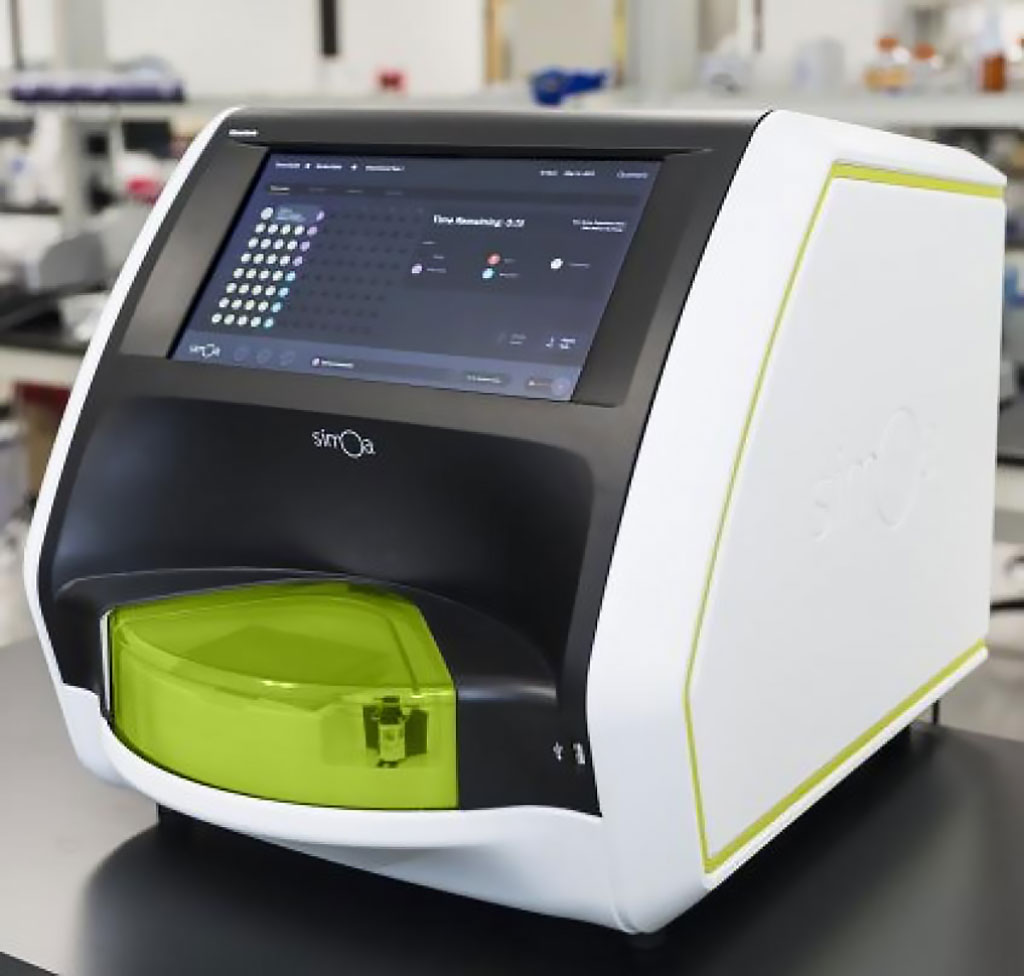Blood Biomarkers Associated with Acute Sport-Related Concussion
By LabMedica International staff writers
Posted on 27 Feb 2020
During the past decade, several candidate biomarkers have emerged as potential diagnostic markers of traumatic brain injury (TBI) and an estimated 90% of brain injuries are classified as mild TBI. Posted on 27 Feb 2020
Early work has identified select biomarkers with favorable performance in the context of mild TBI, including glial fibrillary acidic protein (GFAP), ubiquitin C-terminal hydrolase-L1 (UCH-L1), neurofilament light chain (NF-L), and S100B. High sensitivity and negative predictive value of UCH-L1, GFAP, NF-L, and tau biomarkers to predict intracranial injury present on acute-phase head computed tomography have been reported.

Image: The Quanterix SR-X Ultra-Sensitive Biomarker Detection System uses single molecular array technology (SIMOA) (Photo courtesy of Quanterix Corporation).
Neurosurgeons at the Medical College of Wisconsin (Milwaukee, WI, USA) and their multidisciplinary colleagues conducted a multicenter, prospective, case-control study of 504 collegiate athletes with concussion, contact sport control athletes, and non–contact sport control athletes completed clinical testing and blood collection at preseason baseline, the acute post injury period, 24 to 48 hours after injury, the point of reporting being asymptomatic, and seven days after return to play. Data analysis was conducted from March 1 to November 30, 2019.
The team collected non-fasting blood samples by venipuncture at baseline and all post injury time points. Single molecular array technology (Simoa; Quanterix Corporation, Billerica, MA, USA) was used to measure serum biomarker levels. Multiplex technology simultaneously quantified UCH-L1, tau, NF-L, and GFAP. The mean coefficients of variance for each protein were the following for data included in the analyses: 9.02% for UCH-L1, 7.92% for tau, 4.59% for NF-L, and 3.07% for GFAP.
The scientists included in the study a total of 264 athletes with concussion (mean age, 19.1 ± ±1.24 years); 211 (79.9%) male), 138 contact sport controls (mean age, 19.03±1.27 years); 107 (77.5%) male, and 102 non–contact sport controls (mean age, 19.39 ±1.25) years; 82 (80.4%) male). Athletes with concussion had significant elevation in GFAP (mean difference, 0.430 pg/mL; 95% CI, 0.339-0.521 pg/mL), UCH-L1 (mean difference, 0.449 pg/mL; 95% CI, 0.167-0.732 pg/mL), and tau levels (mean difference, 0.221 pg/mL; 95% CI, 0.046-0.396 pg/mL) at the acute post injury time point compared with preseason baseline.
While Nf-L interaction was not considered significant as a concussion indicator, findings support its use as a measure for the seriousness of an injury and triggered neuronal damage. Nf-L was the only marker elevated days after return-to-play (RTP) in more severely injured athletes with loss of consciousness (LOC) or post-traumatic amnesia (PTA).
The authors concluded that the results suggest that blood biomarkers can be used as study tools to inform the underlying pathophysiological mechanism of concussion and provide additional support for future studies to optimize and validate biomarkers for potential clinical use in sport-related concussion (SRC). The study was published on January 24, 2020 in the journal JAMA Network Open.
Related Links:
Medical College of Wisconsin
Quanterix Corporation














